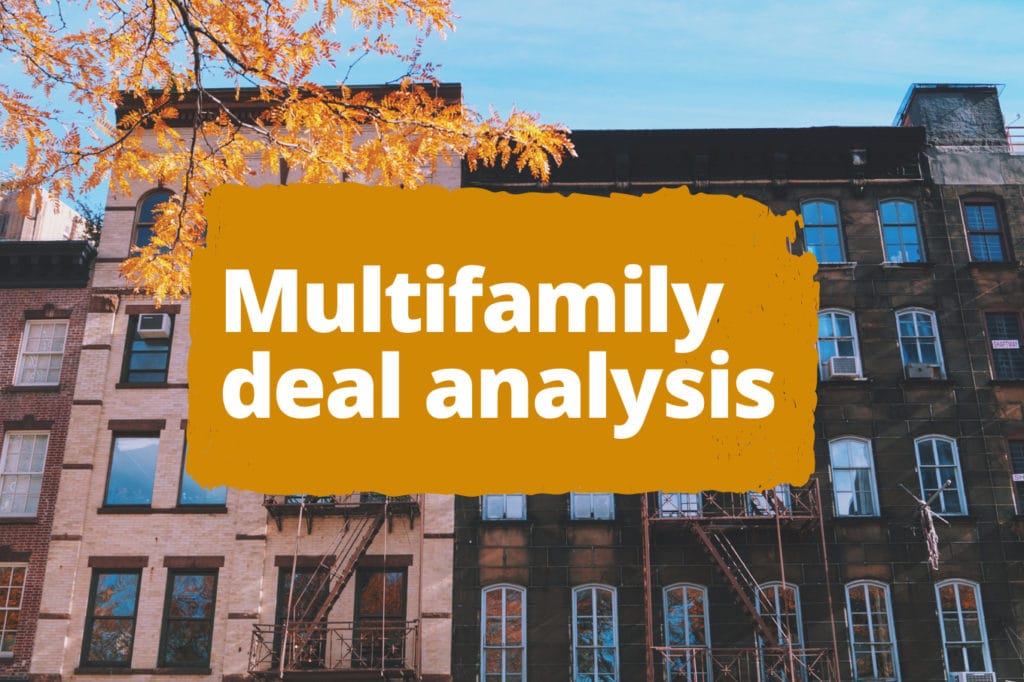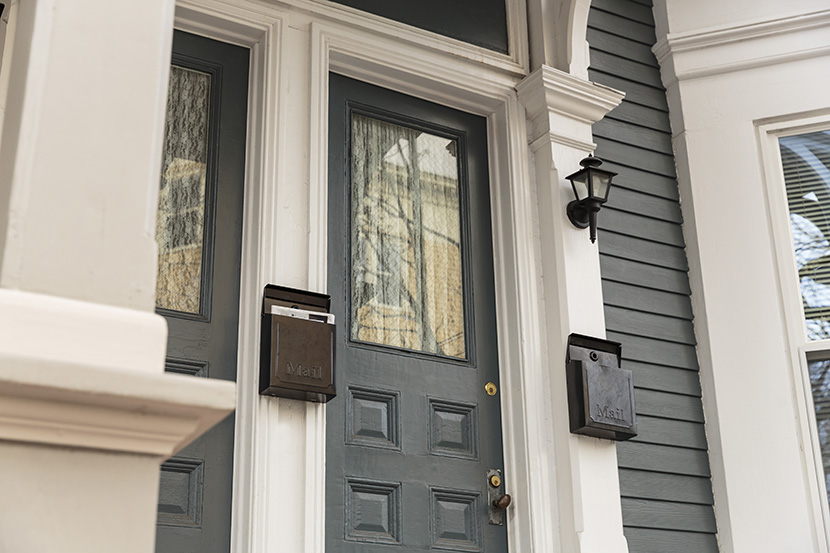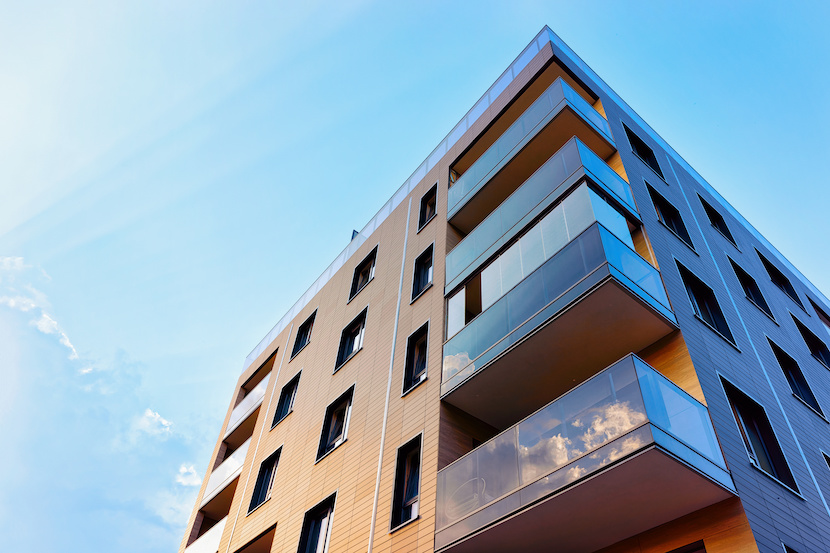Multifamily property investing is attracting ever more interest, leading to increased demand. But many investors aren’t sure how to run a multifamily deal analysis. How do you quickly assess deals to see if they’re worth making an offer on, and how do you know how much to bid?
If you can run numbers and keenly assess for cash flow and value-add opportunities, you can position yourself to help other investors who may not have the time or interest to do the same.
What are multifamily properties?
Multifamily properties include apartment buildings, duplexes, townhouses, and condo buildings. It is any property in a neighborhood with more than one housing unit.
Increasing numbers of stock market and single-family real estate investors want to step up to multifamily property investing. A significant step in this process is to swiftly sift through property leads to determine how much they are worth and which ones are worth pursuing. This is done through multifamily deal analysis.
6 benefits of investing in multifamily real estate
There’s more demand for multifamily rental properties because of the advantageous benefits for investors.
This includes:
- Cash flow. Apartments generate monthly income, similar to dividends paid by stocks. The rental income rolls in every month.
- Control. You are the captain of your own ship. You have the ability to control every decision that affects your investment.
- Tax advantages. It’s not what you make, it’s what you keep that’s important, and real estate offers tremendous tax benefits. Why would the government create advantages for this tax class? It realizes it does not have the ability to deliver affordable housing. Offering these real estate investment benefits is trying to stimulate the private sector to step in and fill the void.
- Economy of scale: This is a huge advantage when trying to scale your business. It’s much easier to collect rent from 30 tenants in an apartment building than race across the city to collect from multiple single-family homes. It is both easier and more cost-effective to have more units under one roof.
- Ability to force appreciation: The value is not as reliant on comps as it is on your ability to increase the value through growing the net operating income (NOI).
- Velocity of money: This refers to the ability to refinance a property, withdraw equity, maintain control of the asset, and invest the refinance proceeds into another property. Banks are the ideal example of “velocitizing” money. They borrow funds from their customers and lend the proceeds to individuals looking for loans. The faster the money moves, the wealthier you become.
Calculating the cap rate
Before we do the math, let’s talk about cap rates. Capitalization rates are a fancy way of saying the expected rate of return based on the income in real estate. It can be helpful when deciding which property to invest in.
Cap rates have an inverse relationship with market value. When cap rates compress, the value increases—and vice versa. It’s fantastic when you own property and cap rates are falling, but just the opposite when you are trying to invest.
NOI / Value = Cap Rate
For example, if the property has an NOI of $50,000 and is listed for $500,000, then the cap rate would be 10 ($50,000 / $500,000).
More on multifamily investing from BiggerPockets
How to Find Multifamily Properties—And 5 Steps to Complete Before Searching
Ready to invest in multifamily? Get creative—dig up your own deals by driving your market and using the internet. Keep going. The deals are out there.
Is Multifamily a Good First Real Estate Investment?
In my 15-plus years as a real estate investor, I have been asked this question many, many times. My answer has always been and continues to be the same.
5 Amazing Benefits Multifamily Investments Offer (That Single Family Homes Don’t)
Choosing your real estate investment strategy entirely depends on your personal goals—but multifamily investing DOES have some distinct advantages.
Doing the math
1. Calculate the NOI
The net operating income levels the playing field for all comers, telling you how much income you can expect after you’ve handled the day-to-day financial demands of the property. You can use the numbers provided by the broker for preliminary screening, but you should ideally ask for and then research the numbers. You can then do your own calculations by using this formula.
NOI = Total Income – Total Operating Expenses
Total Income:
- Total rent
- Total fees (pet fees, late fees, coin-op laundry, etc.)
Operating Expenses:
- Vacancy (5-10% of rent)
- Taxes (city and county)
- Insurance (talk to an insurance broker)
- Maintenance (3-5% for snow removal, lawn mowing, cleaning common areas, etc.)
- Management (ask local property managers for rates)
- Utilities (call the utility companies)
- Repairs (3-5%)
- Professional fees
2. Calculate the cash flow
Cash flow, on the other hand, is specific to you, the investor. Take into consideration your mortgage terms as well as your inclination to plan and save for future capital expenditures (CapEx). This is what you truly “take home” as profit.
Cash Flow = NOI – (Mortgage Payment + Reserves for CapEx)
How much you assign to CapEx reserves is how much you plan to save for big expenses. Think of what big-ticket items you may need and how soon you may need to replace them.
Say the roof is expected to last another 15 years, and it will cost an estimated $15,000 to replace. You would target saving about $1,000 per year for 15 years. Some suggest using a quick and dirty $250 per unit per year for larger multifamily properties.
How much cash flow is enough? Some investors say the goal is cash flow that gives at least double-digit cash-on-cash returns.
Cash-on-Cash Return = Cash Flow / Cash Invested x 100
3. Find opportunities to raise value
Unlike a single-family home, the value of a multifamily property is based on its financial operations.
Value = NOI / Capitalization Rate
The capitalization rate is a multiplier that indicates how much the market is willing to pay for certain returns in a given area and a given property class. As with comps for single-family homes, you can ask your broker for this number.
When you have the going cap rate in the area, you can determine how much a change in the NOI of a property will change its value. Your goal is to raise the NOI.
How do you raise the net operating income?
- Increase income: raise rents; charge additional fees such as late fees, pet fees, etc.; install coin- or card-operated washers and dryers; offer paid storage; add cell towers, etc.
- Decrease expenses: fix leaking faucets and pipes, install energy-efficient appliances and windows, charge back utilities, etc.
While analyzing the deal, try to identify clear ways you can make these changes. Research your competition and determine if you would need to upgrade the units to raise the rents. Factor any rehab costs into your purchase price.

Build your wealth with multifamily houses
Learn how to become a millionaire by investing in multifamily houses! In this two-volume set, The Multifamily Millionaire, Brandon Turner and Brian Murray inspire and educate you into becoming a millionaire.
4. Determine your purchase price
Determine your purchase price based on the current NOI of the property and the going cap rate. Don’t overpay today for unrealized potential.
If, for example, you determine that the current net operating income of a property is $40,000, and the going cap rate in the area is 12%, your purchase price should be no more than $333,000.
Purchase price = NOI / CAP rate
Notice there’s no mention of the asking price in this analysis. Go with the numbers. Determine what your maximum offer is. Make your offer. Start negotiations.
Don’t forget your due diligence
When you are looking at hundreds of deals, quick analyses can save you a tremendous amount of time. Do your due diligence for each multifamily property that you are serious about investing in. This includes obtaining bank statements, rent rolls, unit inspections, and so on. All the documentation and hard facts will either confirm your assumptions and verify the numbers or they won’t.
Tips to make your investment more profitable
There are a few ways to make your investment more profitable after you do your due diligence and close the contract.
Potential ways to add value to the property might include:
- Adding upscale touches, such as two-tone paint and upgraded kitchen floors
- Offering amenities such as a fitness center or clubhouse
- Instituting a Ratio Utility Billing System (RUBS)
- Changing the zoning on a property to a more favorable use
- Generating new sources of revenue, such as laundry fees, pet fees, late fees, application fees, and storage fees
- Renovating a property to allow an increase in rents
- Increasing the quality of the tenant base
All of the value-adds listed above need to focus on either increasing revenue or decreasing expenses. If you decide to install granite countertops, but this upgrade fails to increase revenue, this is NOT a value-add. One of the biggest mistakes investors make is to over-improve a property without focusing on the ability of the improvement to increase revenue.
This is the beauty in multifamily real estate. You have the ability to increase the value of your asset by employing sound management principles to increase the NOI, thereby increasing the value.
Note By BiggerPockets: These are opinions written by the author and do not necessarily represent the opinions of BiggerPockets.



